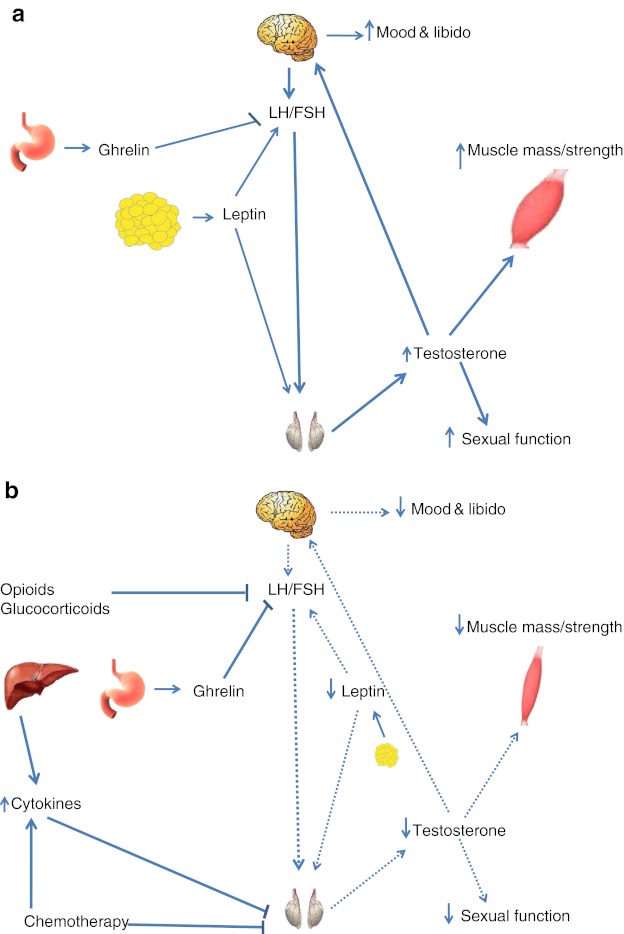Fig. 1.
Illustration of pituitary–gonadal axis in healthy individuals (a) and in cancer patients (b). Increased ghrelin, decreased leptin, and medications (opioids and glucocorticoids) suppress LH production, thereby causing central hypogonadism. Increased inflammation, certain chemotherapeutic agents, and changes in ghrelin and leptin may also contribute to hypogonadism by downregulating testicular production of testosterone directly. Dashed lines indicate a decrease in the pathway

